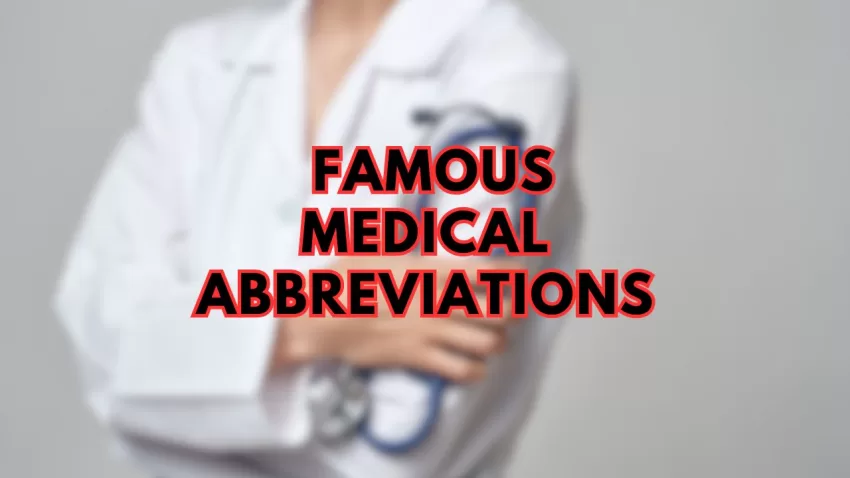In the evolving world of healthcare, medical abbreviations play an important role. These medical abbreviations are shorthand for complex medical terms and procedures to help improve communication between healthcare professionals. And to help you with this, we’ve put together a shortlist of common and famous medical abbreviations that you might have seen on a doctor’s notepad.
Thus you will now understand medical abbreviations and their meaning and importance in the context of the modern healthcare world. Then without further ado let’s move on to the medical shortcodes and their medical meanings.
Lists of Famous Medical Abbreviations
These are a few famous abbreviations and their extensions used in the healthcare community.
AC: Before meals
Ad lib: At liberty; means a patient can be allowed to move freely from the bed and commands can be given.
ADR: Adverse drug reaction
AIDS: Which means acquired immune deficiency syndrome
AKA: Above the knee amputation
ARF: Acute kidney failure
ASCVD: Cardiovascular disease
B.I.D. : Twice a day. Which means, take the medicine twice a day.
BLD: Blood
BKA: Below the knee amputation
BP: Blood pressure
BPD: A personality disorder
C&S: Culture and sensitivity. It is to detect infection
C/O: Complaint of. Which means the particular patient expressed their concern.
CAP: Capsule.
CA: Cancer. Which means A patient who is under cancer treatment
CABG: Coronary artery bypass graft. A surgery related to the heart.
CC: Chief complaint
CDE: Complete dental evaluation.
CC: Cubic centimeters. This summarizes the total quantity of fluid removed from the patient’s body.
COPD: Chronic obstructive pulmonary disease.
CT: Chemotherapy; Therapeutic therapy for cancer.
CVA: Cerebrovascular accident also known as Stroke.
D/C or DC: discharge.
DCIS: Ductal Carcinoma In Situ, which means breast cancer.
DDX: Differential diagnosis.
DM: Diabetes mellitus.
DNR: Do not resuscitate means it is specifically mandated not to artificially resuscitate a sick patient.
DOE: Dyspnea on exertion means breathings issue
ETOH: Medical observation of the alcoholic
FX: Fracture.
Gomer: Exit the emergency room.
GTT: Drops
H&H: Hemoglobin and hematocrit.
H&P: History and physical examination.
H.S.: At bedtime means taking medicine at bedtime.
H/O or h/o: disease past History
HA: Headache.
HRT: Hormone replacement
HTN: Hypertension.
I&D: Incision and drainage.
ICD: Implantable cardioverter defibrillator
ICU: Intensive care unit.
IM: Intramuscular.
IMP: Impression, means the doctor’s summary assessment of the patient’s condition at the specified date and time.
ITU: Intensive therapy unit
In Vitro: In the laboratory
In Vivo: In the body
IPF: (Idiopathic pulmonary fibrosis) type of lung disease.
IU: International units
JT: Joint
KCL: Potassium chloride.
LBP: Low back pain
M/H: Medical history
N/V: vomiting
NPO: Nothing by mouth
O.D.: Right eye.
O.S.: Left eye.
O.U.: Both eyes
p¯: After meals.
p.o.: By mouth
Plt: Platelets
PT: Physical therapy
q.d.: Each day means take medicine daily
q.i.d.: Means take medicine Four times daily
R/O: Rule out
Tab: Tablet
T: Temperature
TID: Take the medicine three times a day
ULN: upper limit of normal
XRT: external radiotherapy
Conclusion
Although these are the famous medical abbreviations used by doctors these days. Anyway, if you are a professional or a medical enthusiast, the above information will help you learn the language of medicine. Whether you’re a seasoned medical professional or a curious enthusiast, join us as we unravel the abbreviations that shape the language of medicine.
